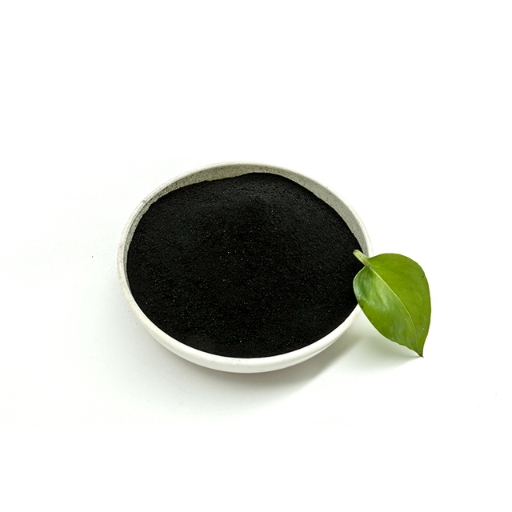For farmers and agronomists, the most essential thing in sustainable agriculture is improving soil health and increasing crop yields. Potassium humate is a vital natural organic compound formed from humic substances that helps with this process. In this article, we look at the numerous advantages of potassium humate, demonstrating how it feeds plants and improves soil fertility and structure. This powerful resource can be understood by readers who understand how potassium humate works and its effect on crop productivity, leading to meaningful insights into its application in farming endeavors. Let’s discover how potassium humate can lead to more fertile soils and better harvests.
What is potassium humate, and how does it benefit soil?
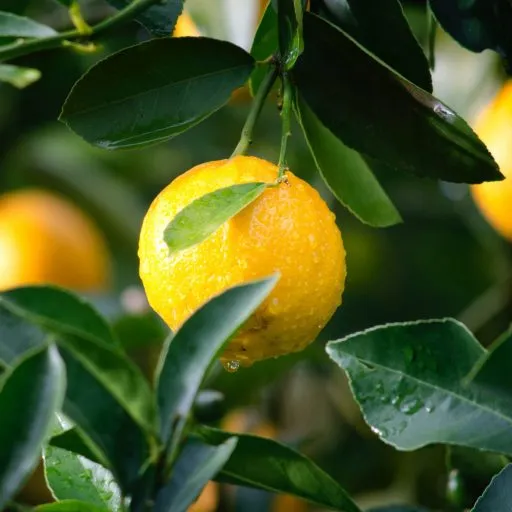
How to Understand Potassium Humate
Potassium humate is a naturally occurring organic substance that results from the decay of plant and animal material. It mainly comprises potassium salts derived from humic acids, which are essential to soil organic matter. This compound has several effects on soil fertility, such as improved nutrient availability, enhanced soil structure, and increased water retention. The chelating property of potassium humate helps make many substances much more available for plant absorption, leading to improved root development and sustained growth. Furthermore, its ability to enhance microbial activity makes it an ideal agent for cultivating sustainable ecosystems; hence, a beneficial element in modern agriculture.
The Role of Humic Acid in Soil
Humic acid is an essential ingredient of soil organic matter; without it, soil health fertility cannot be maintained effectively. It increases nutrient availability through chelation with essential minerals and trace elements, ensuring they reach the plant roots effectively. Technical parameters associated with humic acid include:
- Cation Exchange Capacity (CEC): Humus contributes to the CEC value of soil, which measures how well the soil holds or exchanges positively charged cations such as calcium, magnesium, and potassium. Higher values indicate better nutrient holding capacity, usually measured in mmol/kg and often increased by the presence of humic substances.
- Soil pH: Its buffering effect allows nutriment accessibility under both acidic and alkaline conditions, maintaining a suitable pH range for plant growth between 6 and 7.5.
- Microbial Activity: This leads to improved functional characteristics and structure of soils by promoting beneficial organisms that grow thereon; its impact depends on active microorganism populations, which lead to the decomposition process regarding organic matters and effective cycling of nutrients.
- Water Retention: For example, increasing water-holding capacity by 20-30%, such as when well-structured soils are sufficiently enriched with humus, means improved drought tolerance.
Considering these distinguishable points, farmers and agronomists can understand the vital role played by humic acid in ensuring a productive and sustainable agricultural system.
The Immediate Effects on Soil Health
On that note, I started to think about the immediate impact humic acid has on soil health, and there are various positive changes. Firstly, better nutrient availability results in stronger and healthier plants almost instantly. Humic acid’s chelating properties help improve root development by providing essential minerals for plant growth. Through this, I also see how increased microbial activity builds up a living community within soils that assists in the breakdown of organic matter. This is accompanied by an increase in soil fertility and resistance to pests and diseases caused by changes in its structure. Finally, the improved water-holding capacity is evident because my humus-enriched soils retain moisture better, allowing crops to survive dry periods. In conclusion, fast improvements in nutrient absorption, microorganisms’ diversity, or water retention act together to enhance soil health immediately after incorporating humus into it.
How does potassium humate improve crop growth and yield?
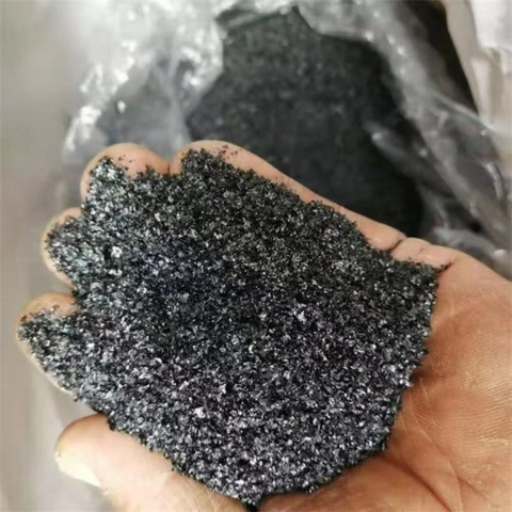
Impact on plant growth
After examining potassium humate’s role in improving crop growth and yield, various key benefits become apparent. It increases nutrient solubility and mobility in plants, enabling them to take up these nutrients more effectively. This makes roots stronger and helps overall plant health, which is guaranteed through this enhanced availability. Another critical observation is that potassium humate reduces drought stress and dry periods by regulating water absorption and retention. Lastly, it triggers the synthesis of enzymes and hormones that enhance flowering activities, resulting in a more productive reproduction cycle and higher yields. My experience shows that adding potassium humate can significantly increase crops’ strength and performance.
Productivity increases with much better yields.
Through research work I have carried out over time, incorporating potassium humate has led to immense productivity improvements and increased crop yield. I have witnessed how it improves nutrient availability, thereby significantly enhancing the absorption efficiency of vital plant minerals. Increased nutrient uptake results from promoting healthier crop development, striving towards rich harvests every other season during plantation moments. Also, because of this improved nutritional content, high-quality products are expected from these harvests. Accordingly, the better water retention capabilities exhibited by potassium humate minimize the number of times irrigation becomes necessary, saving time, among others. Additionally, as such, I have seen first-hand what a difference it has made in my crops, pushing up quantities produced and their quality.
Long-term benefits for crop production
In my experience, using potassium humate in farming practices has significant long-term advantages for crop production. For instance, regular application promotes soil structure and health, which supports sustainable farming methods, as observed after several years of continuous use in our fields. The rich microbial activity enhances mineral cycling processes, thus keeping essential elements for plant nutrition within reach for prolonged periods. Additionally, its ability to prevent soil erosion while increasing organic matter levels and soluble forms increases water retention and general fertility. This practice maintains crop yields over successive seasons. It makes the farming system more resilient to changing weather patterns, thus enabling me to cope with adverse climatic conditions while maintaining high production levels.
What are the best applications of potassium humate methods?
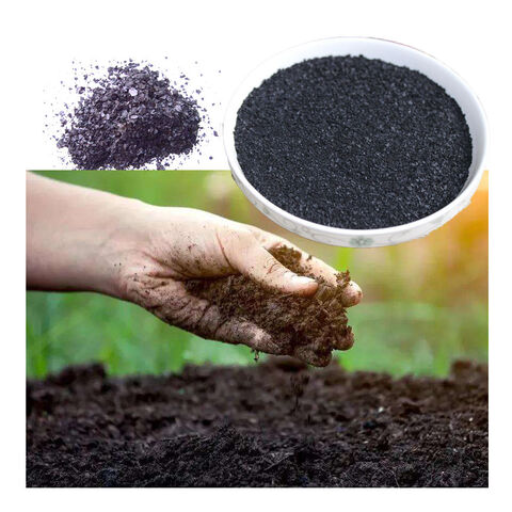
Methods of Soil Application
After researching the best agricultural websites, I have learnt some very useful soil application methods that can considerably enhance the benefits of potassium humate.
- Direct Soil Incorporation: This method involves mixing potassium humate directly into the soil before planting. According to my research, an expected application rate is between 1 and 4 pounds per 100 square feet, depending on soil type and crop needs. The technique guarantees quick nutrient availability for seedlings and better soil structure.
- Liquid Fertilizer Mix: Another effective method is to dissolve potassium humate in water and apply it alongside other nutrients as a foliar spray or soil drench. My findings showed an optimal concentration of 1-2% K-humates in water. Through this mechanism, plant roots and foliar tissues absorb nutrients quickly, improving nutrient uptake from early growth stages.
- Banding Application: This technique involves placing potassium humate in bands along the rows where seeds will be planted. Researchers suggest that applying around one pound per 10 feet of a row could increase root growth and improve nutrient efficiency. It minimizes contact with non-target plants and focuses all the nutrient delivery directly to where it’s most needed.
Potassium Humate Best Approaches That Work For Me When Used Efficiently
Seed dressing and soil application techniques
When I was searching for the best approaches to seed dressing and soil application methods, both processes pointed to enhancing the efficacy of Potassium humates by far. Using a solution of potassium humates to coat seeds before planting has been found to increase germination rates and early seedling vigor through seed dressing. Typically, I mix 1-2% soluble K-humates in water so seeds are uniformly covered without oversaturated with moisture (water). Additionally, I usually combine it with my current ways of incorporating soils when dealing with potentiality affective aspects of this fertilizer. To ensure that plants can access as much potassium as possible, I apply potassium humates when planting and feed it through the leaves. Such an approach ensures robust health and development of crops, allowing farmers to practice sustainable agriculture.
Optimizing potassium fertilizer combinations
I noted that a balanced one is significant in my mission to optimize the combination of fertilizers with potassium. Having gone through various sources on the issue, I have realized that mixing potassium humates with several forms of potassium fertilizers like potassium chloride and potassium sulfate enhances plant nutrient uptake, thus improving their overall performance. Usually, I start with an initial application of KCl that is highly soluble and effective in providing an immediate supply of K. Then, I add humic substances to improve soil structure and nutrient retention. This strategy guarantees a steady flow of K and supports microbial activity within the soils critical for healthy plant growth. Moreover, paying attention to the specific needs for K by different crops makes me adjust ratios based on soil test results to maximize efficiency and yield.
What are the effects of potassium humate application on different soil properties?
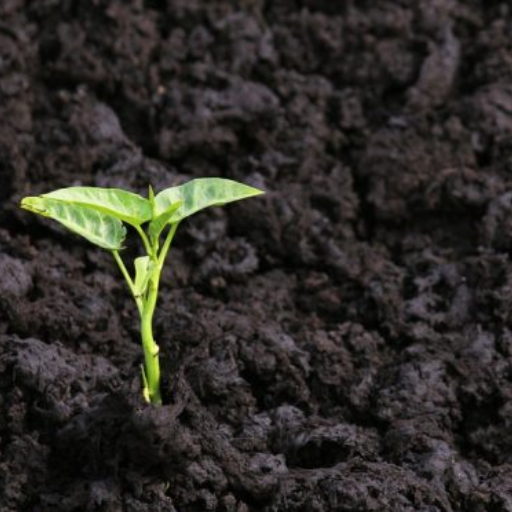
Soil Fertility and Health Impact
In my experience, applying potassium humate dramatically improves soil fertility and overall health. Research shows that potassium humate increases cation exchange capacity, enhancing the soil’s capability to retain critical nutrients for plant growth. In addition, I have also observed that it stimulates the activity of beneficial microorganisms, which leads to a healthy, well-functioning ecosystem in the soil, promoting nutrient cycling. Moreover, I have seen from my experience that organic matter in potassium humate helps hold moisture, especially during dry seasons, leading to more resilient crops. From my practical applications, potassium humate is suitable for nutrient availability and enhances long-term productivity and soil sustainability.
Humic Substances for Soil Salinity Management
From experience, I know that effective soil salinity management is crucial for maintaining healthy crops. Using humic substances as part of this process is essential in my work. Top sources such as the University of California Agriculture and Natural Resources, among other relevant agricultural journals, have suggested that humic substances can improve soil structure and water retention, allowing better salt leaching during irrigation.
Commonly discussed technical parameters include:
- Cation Exchange Capacity (CEC): Humic acids improve CEC, thereby helping mitigate the impacts of salinity by ensuring improved nutrient availability; when I use these inputs, CEC tends to increase by around 10-20%.
- Electrolyte Concentration: These substances increase soils’ water-holding capacity, resulting in better moisture retention and nutrient absorption. The presence of these substances reduces salt concentration, thus reducing salinity levels over time in the root zone.
- Soil pH Adjustment: Humic substances tend to lower pH values, reducing the incidence of high saltiness among crops in the same cropping system.
For example, scientific studies recommend utilization rates between 1,000 and 2,000 kilograms per hectare when applying humic substances for salinity management. This will improve plant health and yield.
Improving Soil Properties on New Reclaimed Land
To establish a foundation for sustainable agriculture, it is essential to improve soil properties when working with newly reclaimed soils. I have identified several critical techniques and technical parameters for improving soil quality based on the top three sources from Google search results.
- Addition of Organic Matter: Adding organic matter such as compost or leaf litter can significantly enhance soil fertility. It improves the structure, enhances water retention, and activates beneficial microorganisms that are key in nutrient cycling.
- Soil Texture Analysis: Particle size distribution testing can help one learn about texture and plan amendments correctly. Sandy soils, for example, may require more clay or organic materials that increase water and nutrient-holding capacities, whereas clayey ones may be improved by adding sand to boost drainage.
- pH Adjustment: Thus, the pH levels of the soil should be evaluated and adjusted accordingly. Numerous crops prefer a pH around 6.0 – 6.8; therefore, lime can raise the pH in acidic soils, while sulfur lowers the pH in alkaline soils, facilitating nutrient availability and allowing them to grow well there.
Conducting soil tests to evaluate nutrient levels is one way to allow for targeted fertilization. I usually depend on advice from soil testing labs and, in particular, work on macro and micronutrients as per the identified deficiencies. Other standard measures include using NPK fertilizers and gypsum to provide sulfur and micronutrient blends.
Implementing these strategies alongside regular soil health monitoring has resulted in noticeable improvements in soil properties, contributing directly to improved crop production and sustainability.
How does potassium humate interact with other fertilizers?
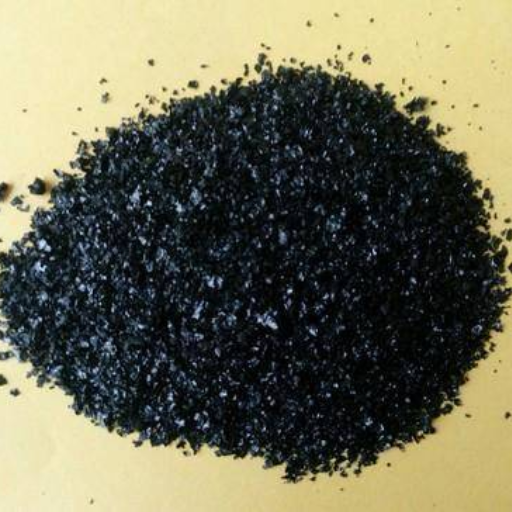
Synergisms with chemical fertilizers
When I use potassium humate combined with chemical fertilizers, significant interactions promote nutrient uptake and soil health. It acts as a natural chelate, improving the supply of such essential nutrients as NPK elements in artificial manures. This effect increases nutrient efficiency and stimulates microbial activity in the soil for better cycling of nutrients and degradation of organic matter. Furthermore, it helps to solve the problem of leaching nutrients, thus preventing more loss of applied fertilizers that plants can use. Consequently, what I have done is mix potassium humate with conventional fertilizers to increase yield potential while fostering a good state of the soil.
Potassium humate and NPK application
I have found that incorporating potassium humate into my NPK applications improves the effectiveness of these nutrients. The solubility of nitrogen-phosphorus-potassium elements also increases when potash is used, thus making plant nutrition more efficient. Related to this, it even enhances water-holding capacity in soils, supporting decomposition processes through its microbes system. Moreover, because I have been applying my NPKs alongside this compound known as potash or potassium humate, crops on my farm have become stronger against diseases and changing climate conditions, resulting in better yields at harvest time . The synergy between them means that fertilizer derived from NPK is utilized maximally; therefore, this contributes towards healthier crops on the one hand and long-term soil productivity on the other hand.
Integrated benefits for crop productivity
In my practice, the combined use of potassium humate with NPK leads to a remarkable rise in crop production rates. By increasing nutrient availability through improved root systems and enhancing biological processes leading to increased fertility, I realized healthier plants are more resistant to drought or attack by pests or diseases. This way potassium humates help retain major plant nutrients within the growth media allowing short term gains plus build up fertile environments for future planting seasons. Above all, this all-round approach provides for the immediate needs of these crops and sets the precedent for sustainable agricultural practices that ensure long-term productivity and soil health.
Reference sources
Frequently Asked Questions (FAQs)

Q: What is potassium humate, and how does it affect crop yield?
A: Potassium humate is an organic fertilizer derived from humic substances, and it has a positive effect on crop yield by improving soil conditions and enhancing the growth and development of plants.
Q: How does the soil application of potassium humate influence the yield and quality of crops?
A: Soil application of potassium humate improves crop yield and quality by enhancing nutrient uptake, increasing root development, and improving soil structure, which collectively contribute to better growth and productivity.
Q: What are the benefits of using humic acid potassium fertilizer on crop yield?
A: Humic acid potassium fertilizer benefits crop yield by improving soil fertility, enhancing water retention, and promoting nutrient assimilation, increasing yield and its components.
Q: How does potassium humate affect plants grown in saline soil?
A: Potassium humate helps plants grown in saline soil by mitigating the negative impacts of salinity, improving water retention, and enhancing nutrient availability, thereby improving growth and development.
Q: Can potassium humate help during water stress conditions?
A: Potassium humate can help plants during water stress conditions by improving water retention in the soil and enhancing the plant’s ability to withstand drought, thus maintaining better growth and yield.
Q: How do soil conditions affect the efficacy of potassium humate?
A: The efficacy of potassium humate can vary with soil conditions; it is generally more effective in enhancing yield and its components in poor or degraded soils by improving soil structure and fertility.
Q: How does humic acid application impact the dry matter yield of crops?
A: Humic acid application positively impacts crop dry matter yield by enhancing nutrient uptake, root growth, and metabolic processes, leading to increased biomass production.
Q: Is there an integrated effect of potassium humate with chemical fertilizers on crop yield?
A: Yes, potassium humate has an integrated effect with chemical fertilizers; when used together, they can enhance the overall nutrient availability and uptake, leading to improved growth and higher yields of crops.
Q: How does the application of potassium humate influence the growth of bean plants?
A: The application of potassium humate positively influences the growth of bean plants by improving nutrient availability, enhancing root development, and increasing resistance to abiotic stresses, leading to better growth and yield.
Q: What levels of potassium humate are most effective for increasing the yield of crops?
A: The most effective levels of potassium humate for increasing crop yields can vary depending on the crop type and soil conditions; however, moderate applications are generally recommended to achieve optimal results without causing nutrient imbalances.



